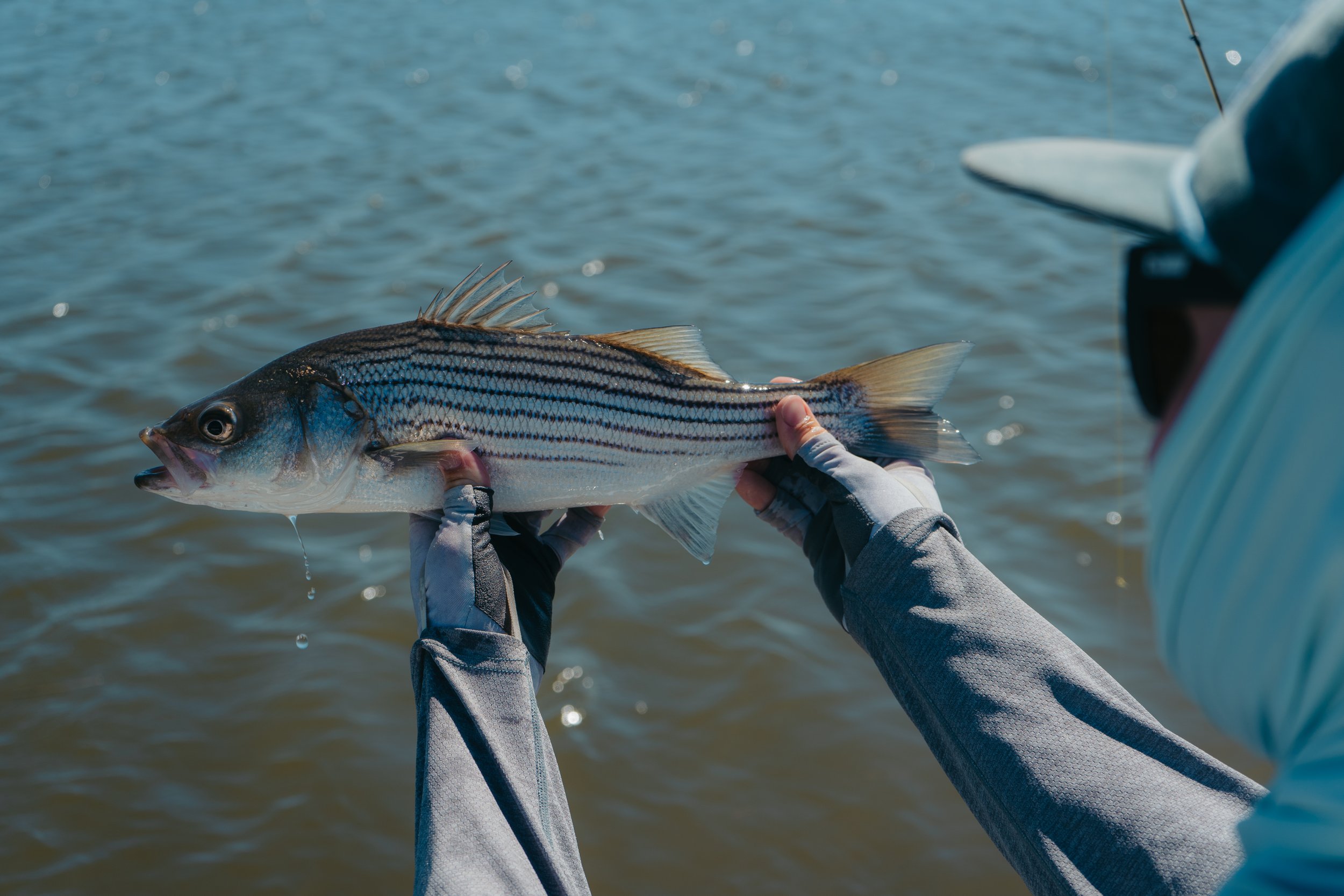Urgent Striped Bass Regulations Passed
On May 3rd, 2023, the Atlantic States Marine Fisheries Association Commission’s Striped Bass board made a crucial decision to protect the species and ensure its rebuild by 2029. The board enacted an emergency action that will implement a 31-inch maximum size limit for striped bass recreational fisheries, effective immediately for 180 days (through October 28, 2023).
The issue of striped bass management is not a simple one, and there are many factors at play. Commercial fishing, in particular, is a significant contributor to the problem; that being said, restrictions of commercial fishing clearly have a significant impact on both the economy and the individuals who depend on these fish for their livelihood. What is crystal clear, is the fact that the most important fish to preserve are the big spawning size fish who are responsible for the future of their species. According to the U.S. Fish & Wildlife Service, a 15-year-old 45 inch, 35-to-40 pound fish can produce around three million eggs, six times as many as a 28-inch fish. So, killing these majestic giants on the way to their spawning grounds is absolutely detrimental to the long-term health of the species.
The Chesapeake Bay is the largest of estuary that these fish use to spawn. It facilitates 70-80% of Atlantic striped bass spawning. After spawning, the population migrates North, where they run encounter millions of fishermen. Inadequate management practices over the last decade have left us with an overfished stock.
Check out the official news release below…
The new regulation excludes the Chesapeake Bay trophy fisheries which only prohibit harvest of fish less than 35 inches. While the Chesapeake Bay trophy season has been a tradition for many years, we would’ve loved to have seen this region included in the announcement as we’re trying to protect more of these big breeders that carry the fate of the species. While some think that the Chesapeake trophy season should be stopped altogether, we would argue that it should be enjoyed sensibly, with a focus on conservation.
Despite the complexity of the issue, it is clear that striped bass stocks need to be protected to ensure the long-term health of the fishery. The board's conservation-minded action is a positive step towards this goal, made possible by the voices of countless guides, brands, and anglers who spoke up for the health of the fish. Although the path to striped bass recovery is still long, the board's decision can give us hope that they will continue to make the hard decisions to manage and build the population of healthy striped bass. Ultimately, it is up to all of us to enjoy and protect this precious resource for generations to come.

